The Magic of Chinese Winters
Winter in China is a season of stark contrasts and breathtaking beauty. From the snow-capped mountains of the north to the more temperate climes of the south, the country transforms into a diverse winter wonderland.
Climate and Weather Variations Across China
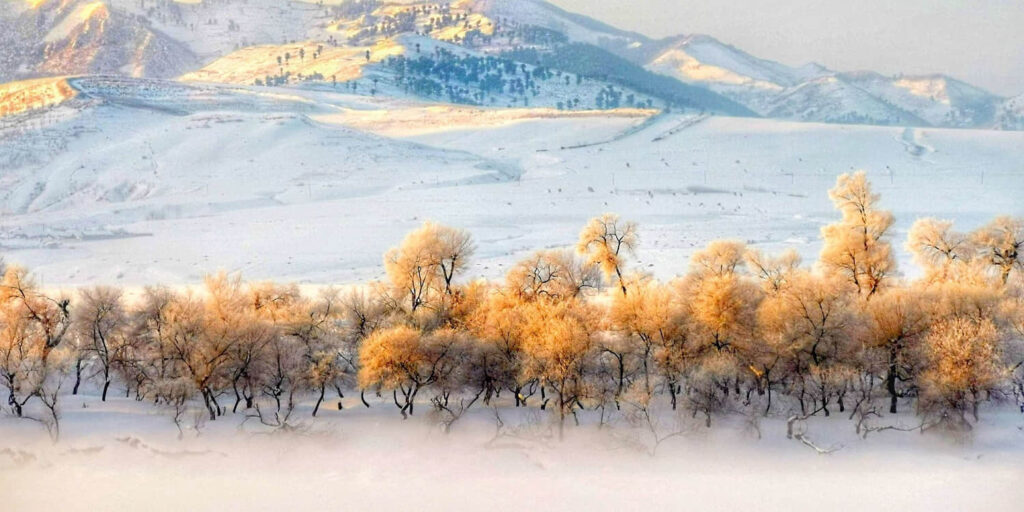
Northern China experiences a harsh and dry winter with temperatures often plummeting below freezing. Cities like Beijing are blanketed in snow, offering a serene and picturesque landscape. The Great Wall, one of China’s most iconic landmarks, becomes a marvel of frosty ramparts and icy watchtowers, presenting a unique view that is vastly different from its summer appearance.
Moving to Eastern China, the climate is milder but can still be quite cold. Cities like Shanghai experience chilly winds and occasional snowfall, making it essential for visitors to bundle up.
In contrast, Southern China, including areas like Yunnan and Guangzhou, enjoys a relatively mild winter. This region is ideal for those who prefer a less severe winter experience, with temperatures rarely dropping below 10°C (50°F).
Unique Winter Landscapes
- The Harbin Ice and Snow Festival: This world-famous festival showcases mammoth ice sculptures and elaborate snow art, turning the city of Harbin into a glittering icy kingdom.
- Snow-Covered Yellow Mountains (Huangshan): These mountains are renowned for their granite peaks and ancient pine trees. In winter, the landscape is transformed into a stunning scene straight out of a traditional Chinese painting, with the snow accentuating the beauty of the jagged rocks and peculiarly-shaped pines.
- The Tibetan Plateau: In winter, the plateau is a sight to behold, with its vast expanses of snow and clear blue skies. The winter months also offer clearer views of the magnificent Himalayas.
These regions exemplify the magical transformation that winter brings to China’s diverse landscapes, making it a must-visit destination for those seeking both beauty and adventure in their travels.
Top Winter Destinations in China
Winter in China is not just about the cold and snow; it’s a season that brings out the unique charm and beauty of various destinations, each offering a different experience. Here are some top winter destinations in China that captivate travelers with their scenic beauty and cultural significance.
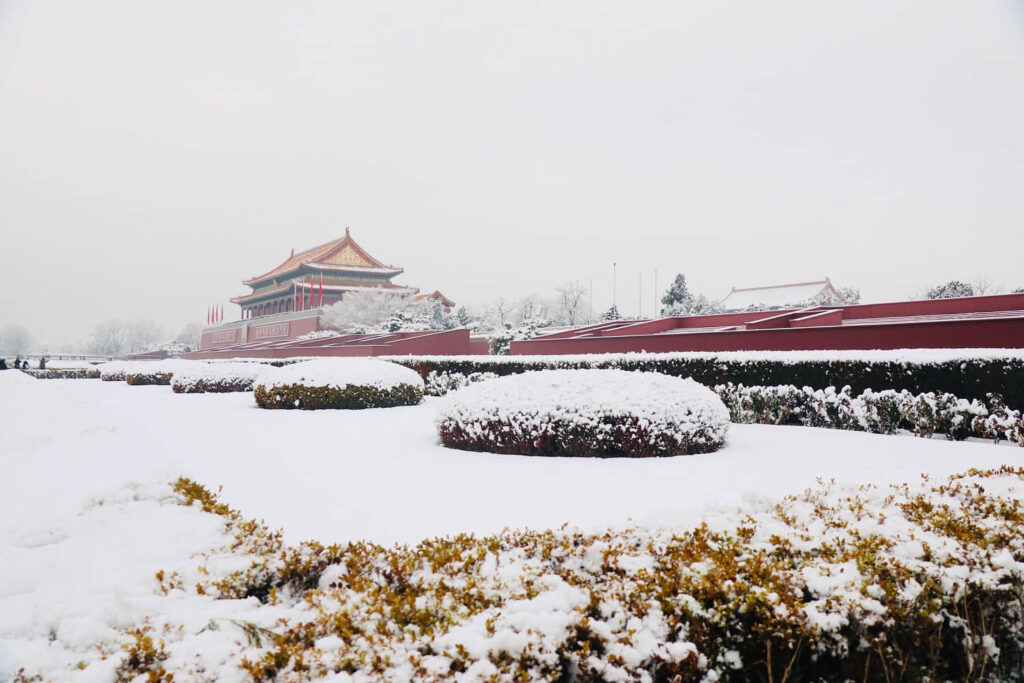
Beijing and the Great Wall
- Beijing: The capital city, steeped in history, takes on a quiet, almost mystical atmosphere in winter. The Forbidden City covered in a light dusting of snow is a sight to behold, offering a tranquil contrast to its usual bustling state.
- The Great Wall: A winter visit to this ancient marvel is a must. The snow-covered wall winding through the barren trees and rugged mountains presents a breathtaking view. Sections like Mutianyu and Badaling are particularly popular among visitors.
Harbin Ice Festival
- Harbin: This city in China’s northeast is renowned for the Harbin Ice and Snow Festival, one of the world’s largest ice and snow festivals. Here, visitors can marvel at the massive, intricately carved ice sculptures illuminated in vibrant colors, creating a surreal, fairy-tale-like atmosphere.
Yunnan’s Mild Winter
- Yunnan Province: Known for its mild winters, it’s the perfect escape for those looking to avoid the extreme cold. The province is a melting pot of ethnic cultures, offering colorful festivals and warm hospitality. The ancient town of Lijiang and the scenic Tiger Leaping Gorge are particularly enchanting in the winter months.
Huangshan’s Winter Beauty
- Huangshan (Yellow Mountains): Famous for its stunning scenery, Huangshan in winter is a paradise for photographers and nature lovers. The snow-covered granite peaks and ancient pines, often enveloped in mist, create a mystical landscape.
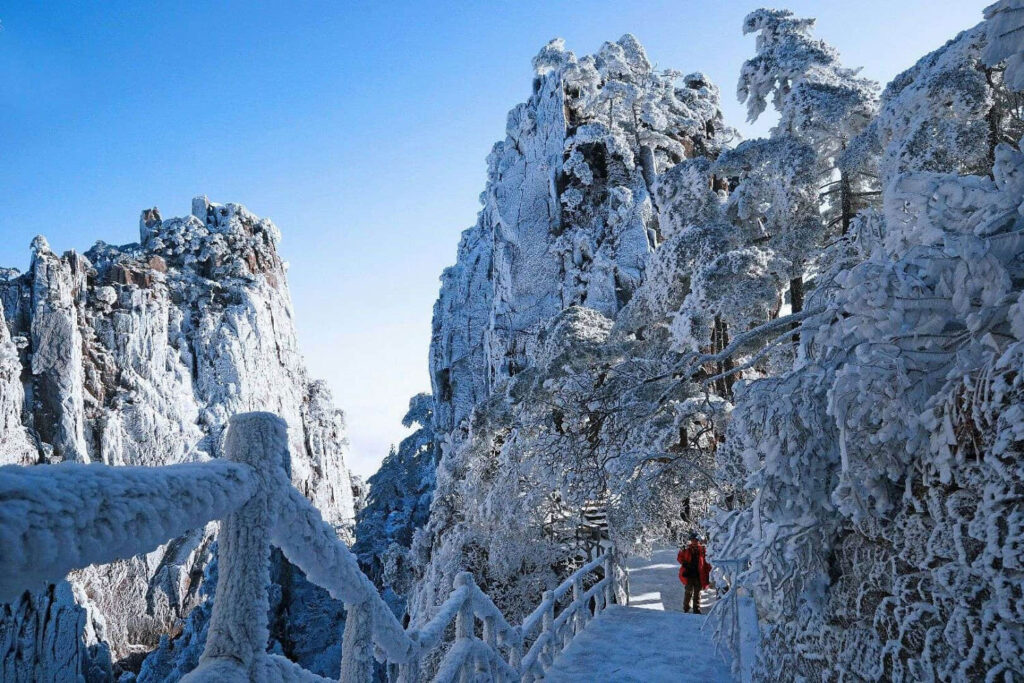
Each of these destinations showcases a different aspect of China’s winter beauty, from urban landscapes adorned in snow to natural wonders transformed by the season. They offer not just visual splendor but also a deep dive into the rich cultural tapestry of China.
Winter Activities and Experiences
The winter season in China is not only a visual feast but also a time for engaging in various activities that are both culturally enriching and exhilarating. Here are some must-try winter activities for anyone traveling to China during this magical season.
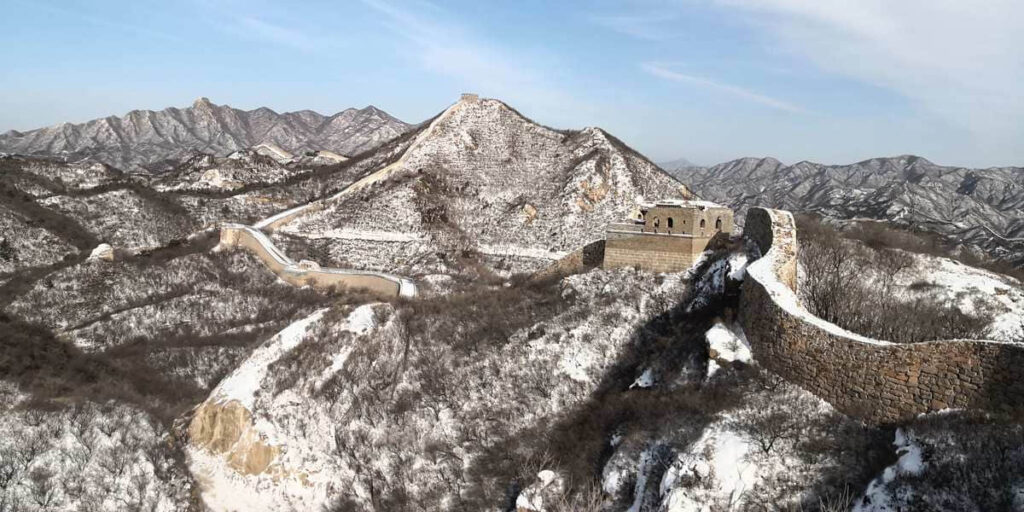
Skiing in Northeastern China
- Northeastern China: This region is famous for its excellent ski resorts. With heavy snowfall and vast mountainous terrain, it’s a paradise for ski enthusiasts.
- Yabuli Ski Resort: Known as China’s best ski resort, Yabuli offers a range of slopes suitable for both beginners and experienced skiers.
- Changbaishan Ski Resort: This resort is famous for its powdery snow and scenic beauty, providing a perfect backdrop for skiing.
Traditional Winter Festivals
- Chinese New Year: Celebrated across the country, this festival is a vibrant and joyous time to experience Chinese culture. Streets are adorned with red lanterns, and traditional performances like dragon dances are common.
- Lantern Festival: Marking the end of the Chinese New Year celebrations, this festival is known for its beautiful lantern displays and traditional lion dances, creating a festive atmosphere.
Hot Springs Retreat
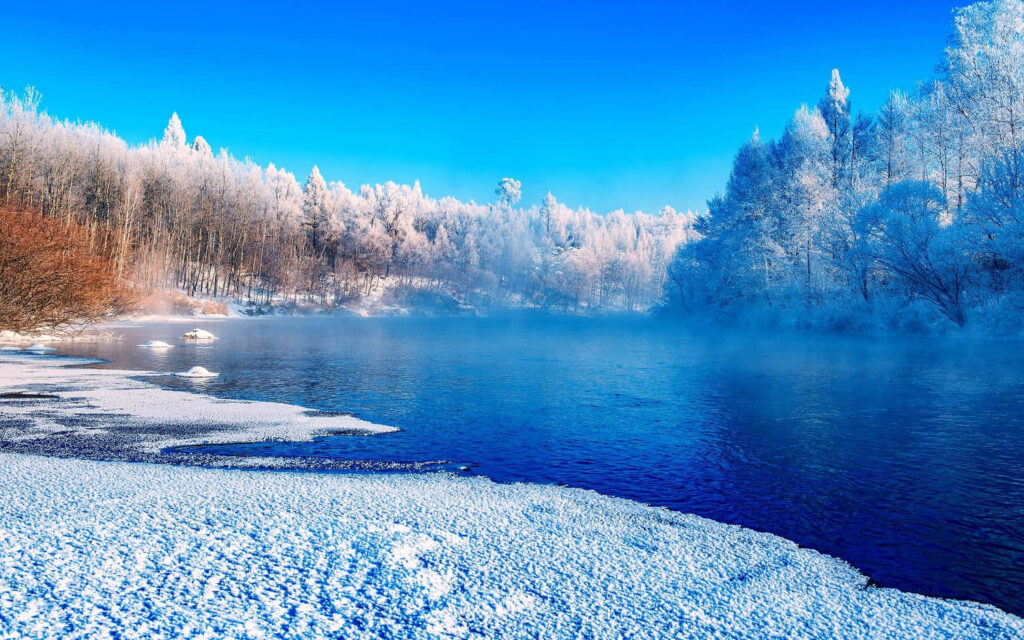
- Hot Springs: After a day of exploring or skiing, relaxing in a natural hot spring is the perfect way to unwind. China has numerous hot springs, often located in scenic areas.
- Yangpachen Hot Springs in Tibet, situated amidst snow-covered mountains, offers a unique experience of bathing in warm waters while surrounded by a snowy landscape.
Ice Fishing and Ice Sailing
- Ice Fishing: In the colder regions, ice fishing becomes a popular pastime. Traditional methods of ice fishing are still practiced in some villages, providing a glimpse into local life.
- Ice Sailing: For the more adventurous, ice sailing on frozen lakes offers an exhilarating experience, combining the thrill of speed with stunning winter vistas.
These activities not only provide fun and excitement but also offer insights into the local customs and lifestyles, making for a truly immersive winter travel experience in China.
Culinary Delights for the Winter Traveler
Exploring China during winter also means indulging in its rich and diverse culinary traditions, especially those that warm the heart and body during the colder months. Here’s a glimpse into some must-try winter delicacies that define China’s culinary landscape.
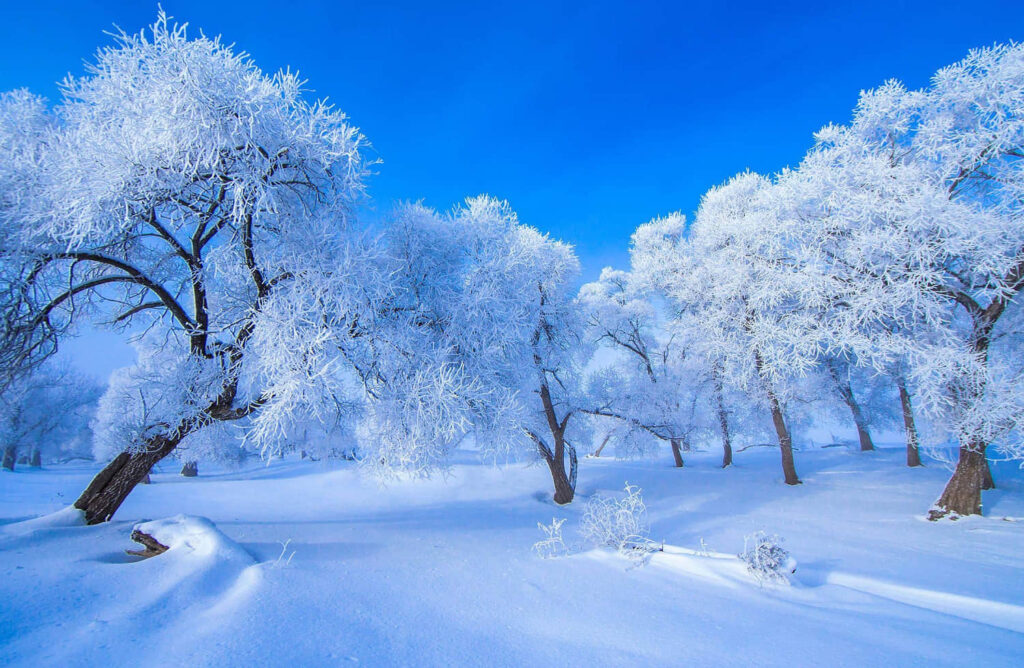
Regional Winter Specialties
- Northern China: Known for its hearty and warming dishes, the region’s cuisine is perfect for cold winters. Dishes like Beijing Roast Duck and various noodle soups are not only delicious but also provide the much-needed warmth.
- Eastern and Southern China: These regions offer a contrast with lighter, but equally warming dishes. Soups and stews featuring local vegetables and seafood are common, with flavors that are both subtle and comforting.
Must-Try Winter Dishes
- Hot Pot: A quintessential Chinese winter meal, hot pot involves cooking a variety of ingredients like thinly sliced meat, vegetables, and noodles in a simmering pot of broth at the table. It’s not just a meal; it’s a social experience.
- Roasted Sweet Potatoes: A popular street food in winter, these are cooked in large drums and are perfect for warming your hands and stomach while exploring.
- Dumplings (Jiaozi): Traditionally eaten during the Chinese New Year, dumplings symbolize wealth and are a staple in northern China. They come with various fillings, from pork and cabbage to shrimp and chives.
- Ginger Duck Hot Pot: A special winter dish in Taiwan, this hot pot is known for its warming properties, attributed to the ginger and medicinal herbs used in the broth.
Winter Beverages
- Ginger Tea: Often consumed for its warming properties and health benefits.
- Rice Wine: A sweet, warm drink made from fermented rice, commonly enjoyed in eastern China.
Each region in China has its unique winter culinary traditions, offering a palate of flavors and experiences that are deeply rooted in the local culture. Sampling these foods not only satisfies the taste buds but also provides a deeper understanding of China’s diverse culinary heritage.
Travel Tips for Winter in China
Traveling through China in winter is a rewarding experience, but it comes with its own set of challenges. Here are some essential tips to ensure a comfortable and enjoyable winter journey across this vast and varied landscape.
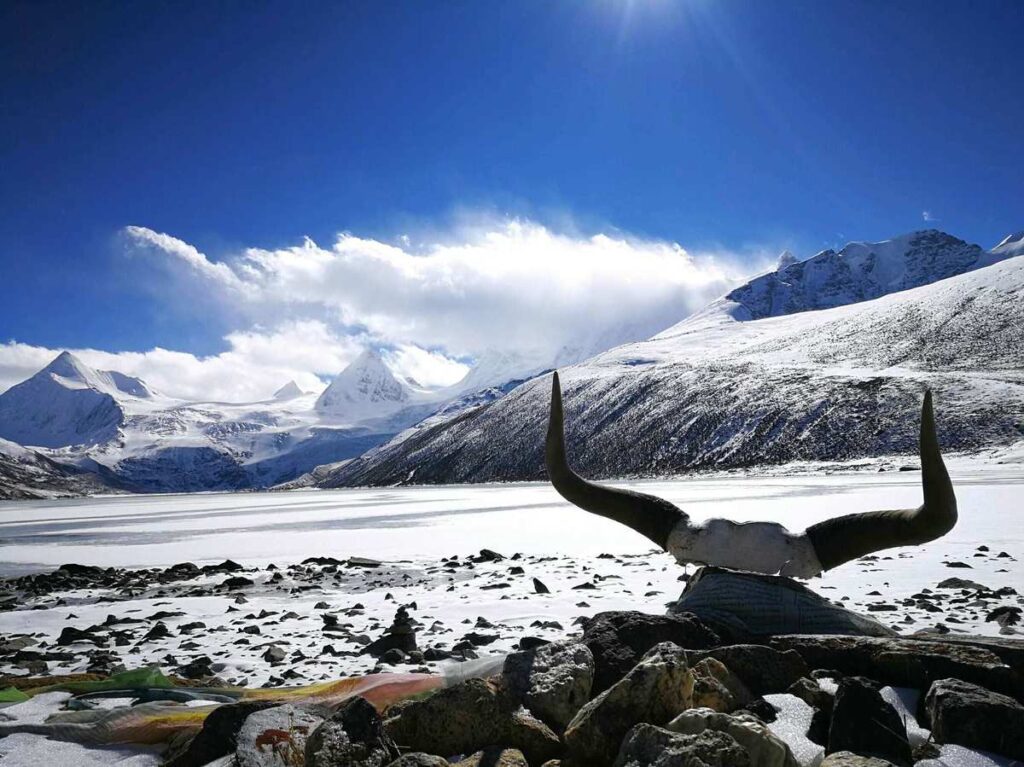
Packing Essentials
- Layered Clothing: The key to staying warm in China’s winter is layering. Include thermal undergarments, sweaters, a heavy coat, and waterproof outerwear.
- Accessories: Don’t forget hats, gloves, scarves, and warm socks. In northern regions, these are essential to protect against the harsh cold.
- Comfortable Footwear: Waterproof and insulated boots are advisable, especially if you plan to visit snowy regions or engage in outdoor activities.
Health and Safety
- Stay Hydrated and Moisturized: The dry winter air can be harsh on your skin. Carry a good moisturizer and drink plenty of water.
- Sun Protection: Despite the cold, the winter sun can be strong, especially in high-altitude areas. Use sunscreen and sunglasses.
- Acclimatization: Give yourself time to acclimatize, particularly in high-altitude areas like Tibet.
Cultural Etiquette and Practices
Understanding and respecting local customs and traditions is crucial for a fulfilling travel experience in China, especially during winter when many cultural festivities take place. Here are some key cultural etiquette and practices to keep in mind.
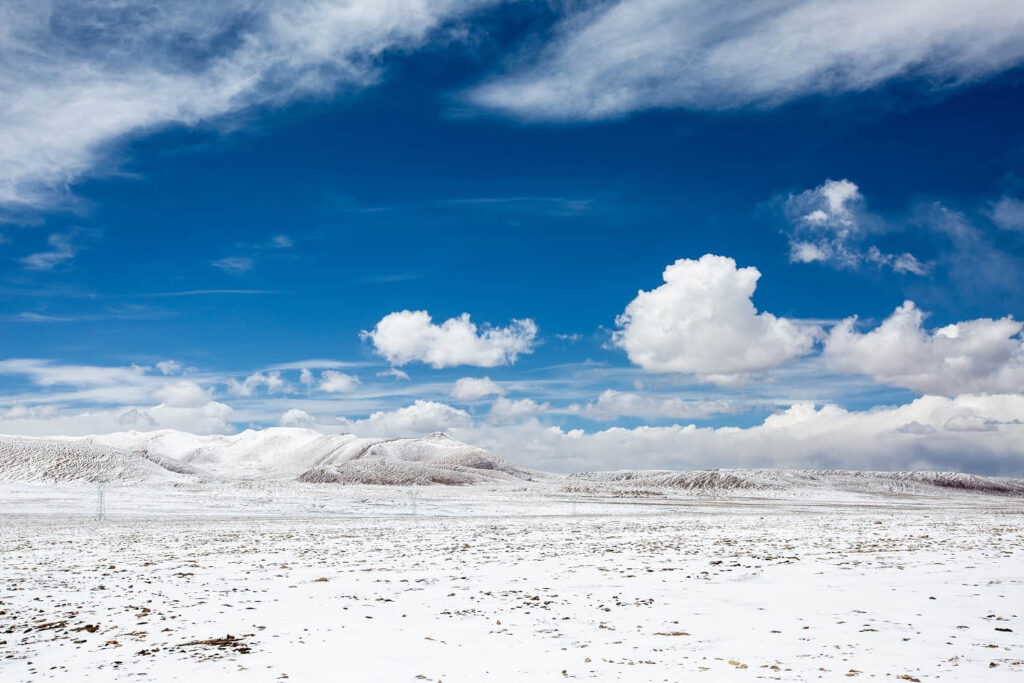
Respecting Local Customs
- Festivals and Celebrations: Participating in local festivals like Chinese New Year is a great way to immerse yourself in Chinese culture. However, it’s important to respect the traditions and customs associated with these celebrations. For example, red is considered a lucky color during Chinese New Year, so wearing it can be a sign of respect.
- Temple Visits: When visiting temples, dress modestly and follow any specific guidelines. It’s common to see people burning incense and bowing; while participation isn’t mandatory, observing quietly and respectfully is important.
Interaction with Locals
- Language Barrier: While English is widely spoken in major cities, in rural areas, it might not be as common. Learning a few basic phrases in Mandarin can go a long way in showing respect and making connections with locals.
- Photography: Always ask for permission before taking photos of people, especially in ethnic minority areas. Respect their privacy and cultural sensitivities.
- Gift-Giving: If invited to someone’s home, it’s customary to bring a small gift. Avoid giving clocks or umbrellas, as they have negative connotations in Chinese culture.
Dining Etiquette
- Shared Meals: Chinese meals are often shared. Participate in this communal experience and try a bit of everything.
- Chopsticks: Never stick chopsticks upright in a bowl of rice, as it resembles incense sticks used for the dead. Place them on your plate or a chopstick rest when not in use.
Embracing these cultural nuances can enrich your travel experience, allowing for a deeper understanding and appreciation of China’s diverse cultural tapestry, especially during the enchanting winter season.
Conclusion
As we wrap up our journey through China’s winter landscapes, it’s clear that the country offers a unique and diverse range of experiences during this chilly season. So, bundle up and set forth on a winter adventure in China that will leave you with stories to tell and experiences to cherish for a lifetime.
